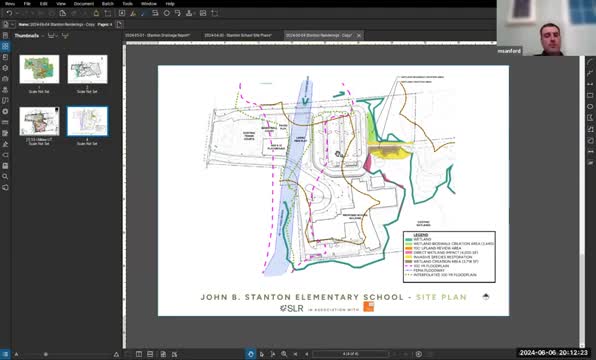Experts unveil ambitious wetland restoration plan
June 07, 2024 | Norwich, New London County, Connecticut

This article was created by AI summarizing key points discussed. AI makes mistakes, so for full details and context, please refer to the video of the full meeting. Please report any errors so we can fix them. Report an error »

In a recent government meeting, officials discussed the environmental assessment and mitigation plans for the John B. Stanton Elementary School site, revealing significant findings regarding the area's wetland systems. The review began with an analysis of the National Wetland Inventory and the Natural Resources Conservation Service's soil survey, which initially indicated minimal wetland presence. However, further investigation uncovered an extensive wetland system, historically connected but currently separated by a culvert due to previous construction activities.
The meeting highlighted the ecological importance of the wetlands, which provide essential functions such as groundwater discharge, wildlife habitat, and nutrient retention. The officials noted that while there are four direct impact areas totaling approximately 4,000 square feet, these disturbances occur primarily at the edges of the wetland, preserving the higher quality interior areas.
Megan Fogarty, an environmental scientist, outlined a comprehensive mitigation strategy aimed at restoring and enhancing the wetland ecosystem. The plan includes the creation of a wetland bioswale and the restoration of previously filled areas to support native vegetation. The initiative emphasizes educational opportunities, particularly in promoting pollinator habitats through the planting of native species.
The meeting concluded with a commitment to environmentally responsible practices, including the removal of invasive species without the use of chemicals, ensuring the long-term health of the wetland systems adjacent to the school. This proactive approach reflects a growing recognition of the importance of wetlands in urban planning and development.
The meeting highlighted the ecological importance of the wetlands, which provide essential functions such as groundwater discharge, wildlife habitat, and nutrient retention. The officials noted that while there are four direct impact areas totaling approximately 4,000 square feet, these disturbances occur primarily at the edges of the wetland, preserving the higher quality interior areas.
Megan Fogarty, an environmental scientist, outlined a comprehensive mitigation strategy aimed at restoring and enhancing the wetland ecosystem. The plan includes the creation of a wetland bioswale and the restoration of previously filled areas to support native vegetation. The initiative emphasizes educational opportunities, particularly in promoting pollinator habitats through the planting of native species.
The meeting concluded with a commitment to environmentally responsible practices, including the removal of invasive species without the use of chemicals, ensuring the long-term health of the wetland systems adjacent to the school. This proactive approach reflects a growing recognition of the importance of wetlands in urban planning and development.
View full meeting
This article is based on a recent meeting—watch the full video and explore the complete transcript for deeper insights into the discussion.
View full meeting
